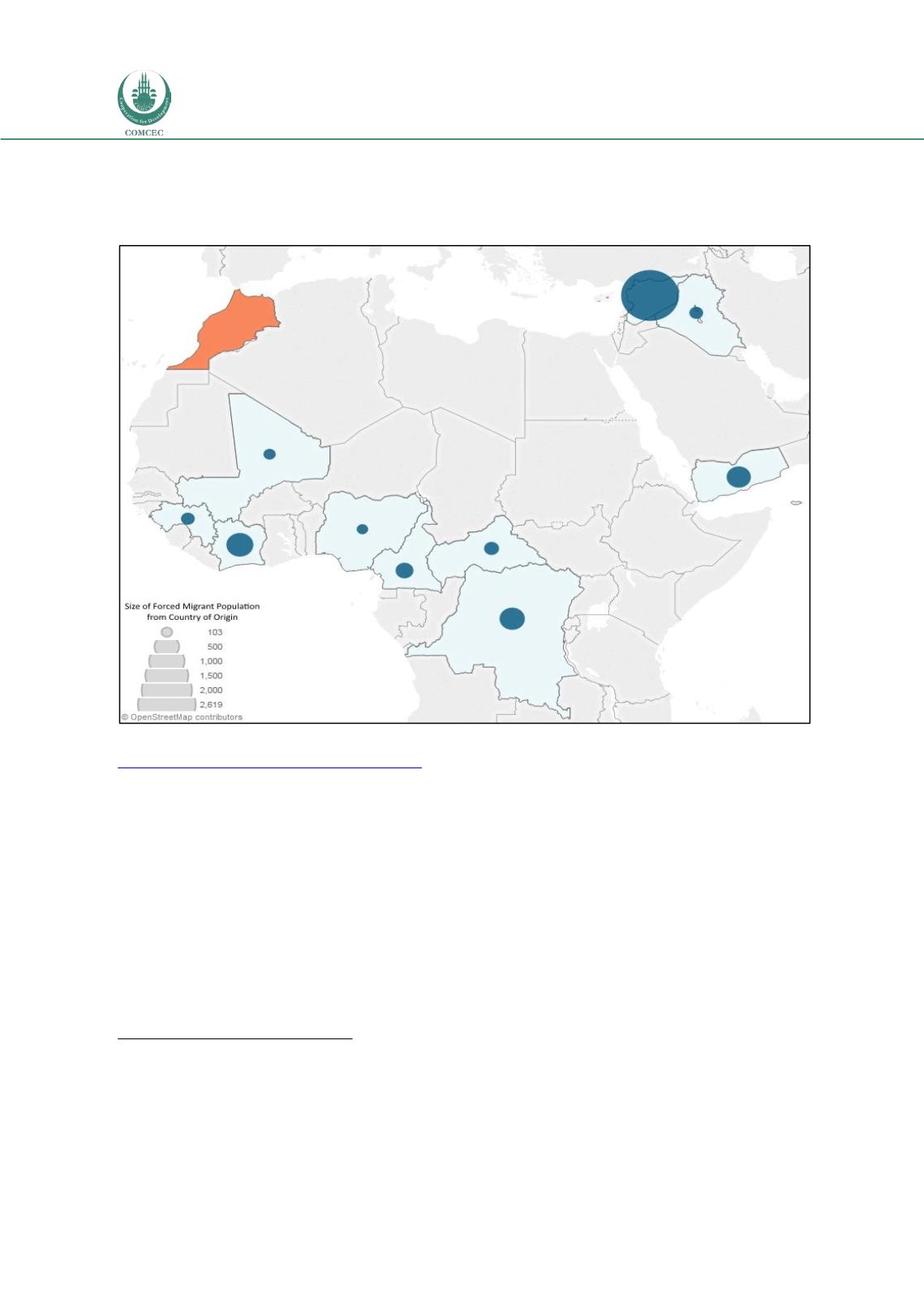

Forced Migration in the OIC Member Countries:
Policy Framework Adopted by Host Countries
114
reported that over 7,000 Syrians sought asylum in the enclave of Melilla, either paying
smugglers or using Moroccan passports to cross the Spanish border.
294
Figure 14: Top ten countries of origin of forced migrants residing in Morocco, 2015
Source: UNHCR, “Population Statistics,” accessed August 9, 2016,
http://popstats.unhcr.org/en/persons_of_concern .Note: Forced migrants are defined as refugees and asylum seekers residing in Morocco as of 2015.
The second largest nationality represented in the refugee population of Morocco is Yemenis.
Almost all Yemeni refugees currently residing in Morocco are refugees “sur place.” The
majority are students who had come to Morocco on academic exchange, and then sought
protection to remain in the country as violence erupted in Yemen in spring 2015.
295
The
remaining forced migrant population in Morocco is comprised mostly of Sub-Saharan Africans.
The profile and experiences of this population are very different from those coming from Syria
and Yemen, as most take long, protracted journeys over land to seek protection and greater
economic opportunities in Morocco.
296
West Africans travelling to Morocco typically take one
of two routes: travelling along the western coast through Mauritania and the Western Sahara
into Morocco, or through Algeria from the smuggling hubs of Gao or Agadez, crossing into
Morocco at the border town of Oujda.
297
Many of these forced migrants have mixed
294
Ibid.
295
Interview with UNHCR conducted by Wiam Khalifa, 2016
296
While this experience varies depending on a migrant’s financial resources, social network, and prior knowledge, this
statement largely holds true. Only the wealthiest who can afford a plane ticket and a visa (if applicable) to Morocco are able
to fly. Cherti and Grant,
The Myth of Transit
, 24
297
Altai Consulting,
Migration Trends Across the Mediterranean: Connecting the Dots
, (Cairo: IOM Regional Office for the
Middle East and North Africa and Altai Consulting, June 2015), 35-37
















